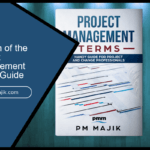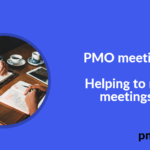 In the last post, Project Governance Meetings, I covered the 2 important meetings that should be set up. However, it is important that thought goes into setting up these meetings so that they can achieve the required outcome.
In the last post, Project Governance Meetings, I covered the 2 important meetings that should be set up. However, it is important that thought goes into setting up these meetings so that they can achieve the required outcome.
Take a moment to think about the project meetings you have attended or perhaps are still attending. Do they achieve the required outcomes or, do you and others think that they are a waste of time with minimal contribution from most attendees? Unfortunately this is the case for many project meetings.
Why Project Meetings Underperform?
There are a number of reasons why a project meeting is not a success. Examples can include:
- No clear objectives
- Attendees who do not have the required information
- Attendees who do not have the authority to make decisions
- Strong personalities monopolising the meeting or pushing their own agenda
- No person leading and steering the conversation
- Attendees unclear of what is required of them
- Materials not issued ahead of meeting for review
- Important decisions and actions are not captured
- Decisions being overturned after meeting as key members not present
There could be a number of other symptons of an under performing meeting. However, the above gives a good idea of the themes.
Where a meeting is not seen to be productive, this leads to a circle of decline. People will stop attending as they see it as a waste which increases the chances that decisions will not be made or will be overtunred post meeting.
Good news…
There are some very simple steps that you can take to set up a project meeting for success.
Project Meeting Terms of Reference
Creating a meeting Terms of Reference (ToR), is a great yet simple tool. It describes all of the important aspects for the meeting so that every participant and those outside of the meeting are very clear on the purpose and operation on the meeting.
The ToR should include:
Purpose
This should clearly explain the purpose of the project meeting so that everyone has a common understanding why the meeting is needed. For example to provide oversight and direction to project ABC.
Responsibilities
This lists out the collective responsibilities of the meeting attendees. This ensures each attendee knows what is expected of them and it provides the authority. For example, review and approve change requests.
Frequency
This will define how often the meeting is held i.e. monthly, weekly, etc.
Duration
This will define the length of the meeting i.e. 1 hour.
Attendees / Members
All regular members and attendees should be listed along with their role. It is important to distinguish between members, who have voting rights and attendees.
It is also important to define if delegates are allowed. If delegates are allowed there is a risk that the meeting will become ineffective as delegates will not have the appropriate knowledge and / or will not be able to make decisions. If delegates are allowed they must be able to perform the required responsibilities.
Chair
One of the Members should be nominated as the chair. It is also a good idea to nominate a delegate chair for when the chair cannot attend.
In some cases you may wish to have a rolling chair with each Member taking a turn. This can work. However, there must be a clear schedule to ensure everyone has a fair turn.
The chair is responsible for ensuring that the agenda is followed. That members and attendees have the opportunity to be heard and ensure that the meeting remains within the terms of reference for the meeting.
Secretary
It is a good idea to appoint a secretary for the meeting. The responsibility is to ensure that all meeting materials are available in a timely manner. The key points from the meeting are captured together with actions and decisions. These will be recorded in formal minutes.
Inputs
Any inputs for the meeting should be clearly defined. This may include some form of meeting pack with required information i.e. status reports and must include the minutes from the previous meeting.
Outputs
Expected outputs from the meeting should be defined. For decisions this should include how they will be communicated to other stakeholders outside of the meeting.
Document the ToR
Once you have defined the above, make sure that it is clearly documented. This can be as simple as a single Word or Powerpoint page. The aim is to make it clear to everyone so there is no confusion.
ToR Sign-off
The documented ToR can then be circulated to the identifeid members / attendees for review and refinement. Plus it ensures that the candidates can assess if they are the right person to attend and that they have the required level of authority.
At the first meeting, one of the agenda items should be the formal review and sign-off of the ToR. The sign-off should then be captured in the minutes.
Summary
The project meeting terms of reference (ToR) is a simple but effective tool to set-up your meetings for success. The steps above will help guide in setting up your own meetings.
To help further please see the post on the Importance of Meeting Logistices.






